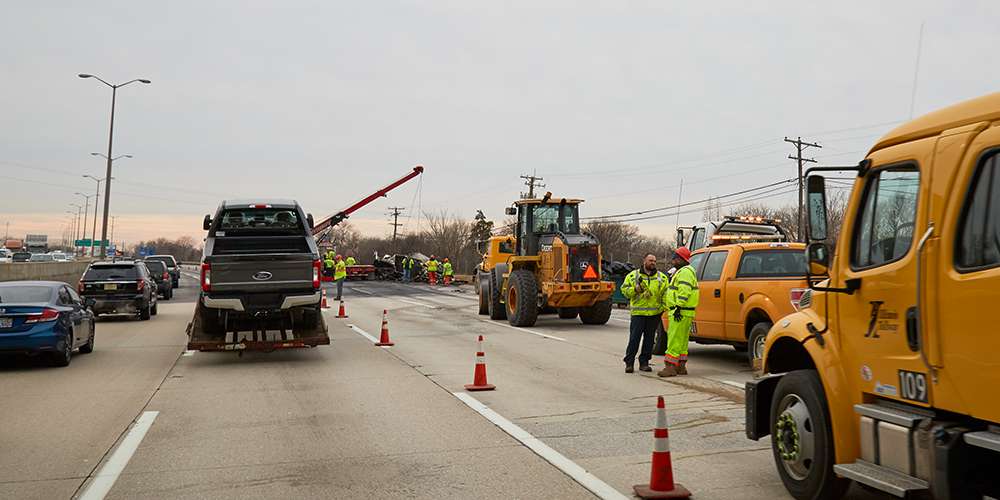Governance
Leading effectively together
A prosperous, inclusive region will require renewed collaboration and focused investment for addressing today’s challenges and adapting to tomorrow's.
Goals

The ON TO 2050 vision of a prosperous, inclusive region will require renewed collaboration and focused investment for addressing today’s challenges and adapting to tomorrow's.
Each level of government has a role to play, from funding and assistance by the State of Illinois and counties, to increased coordination by transportation and stormwater management agencies. Local governments are already taking steps to improve efficiency and share resources, often uniting to pursue economic development and other mutual objectives. For our region to thrive, these efforts should expand to include coordination across more issues and jurisdictions.
Implementing ON TO 2050 will depend on collaboration across jurisdictional lines, highly efficient investment based on measurable outcomes, and a focus on helping all units of local government build the capacity necessary to provide basic services and implement their plans.
State funding plays a crucial -- yet quite uncertain -- role in the region’s ability to invest in infrastructure and support local government services. A more modern tax system, a long-term plan to pay for obligations, and transparent, data-driven budgeting and programming can improve the state’s near-term fiscal condition and long-term outlook. It can also bolster local governments, whose ability to serve the public is impeded by funding constraints.
The following map shows the differences in municipal revenues across the region. Without adequate resources, many have been forced to defer projects and eliminate staff. By working together effectively across borders, the region’s governments can stretch their limited funds to provide the services and infrastructure that residents and businesses require. This can include sharing or consolidating services, as well as consolidating governments in some cases, to improve public services and increase efficiencies.
- No data available
- First quartile (lowest revenue)
- Second quartile
- Third quartile
- Fourth quartile (highest revenue)

State and local governments -- along with transit agencies -- need the fiscal, technical, and administrative capacity to function effectively. With proper funding and support, the State of Illinois and local governments will be able to implement performance-based decision making, improve asset management, and leverage new technology for better services and infrastructure.
This chapter describes recommendations to promote:
- Inclusive Growth through tax policy reforms and technical assistance to communities.
- Resilience through improved long-term finances and increased collaboration across jurisdictions.
- Prioritized Investment in services and infrastructure through data-driven decision making.
Goal
Collaboration at all levels of government
For northeastern Illinois to fully achieve its potential, leaders must work together more consistently and effectively. Among the region’s most pressing needs are to improve infrastructure and promote economic growth, both of which have been stagnant for years. Regional leaders also must come together to develop innovative and broad solutions to ensuring inclusive growth and building resilience at the local and regional levels. Disjointed, siloed approaches hinder our ability to prosper. Resource and funding constraints across all levels of government require new approaches, from sharing and consolidation of local services to collaboration by transportation agencies for maintaining the system and improving its reliability.
Goal
Capacity to provide a strong quality of life
Governments’ ability to achieve goals is essential to the advancement of our region as a whole. Too often, however, public revenues are insufficient to deliver services, maintain infrastructure, and fill other essential government functions. Proficient local staff and officials -- with skills maintained through professional development and training -- are essential for their units of government to undertake important initiatives and to complete projects. A sustained commitment to building capacity -- revenues, skills, and technical resources -- will bolster local government’s ability to meet residents' needs, implement community plans, and achieve ON TO 2050 objectives.
Goal
Data driven and transparent investment decisions
Basing decisions at all levels of government on transparent practices that direct public investments based on performance goals and data helps extend limited public resources. The region has many needs, yet limited resources impair essential investments in infrastructure and improvements to programs and services. Funding should be focused on those programs, services, and infrastructure that best achieve the region’s goals. However, budget processes and infrastructure investment practices are not always set up for data-driven approaches, and data is not always available to utilize performance-based investment criteria.






